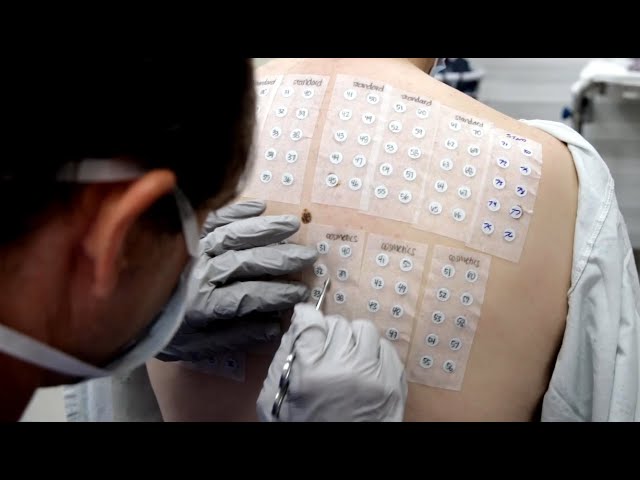The Ultimate Guide to Skin Patch Testing: Everything You Need to Know
Skin Patch Testing: A Comprehensive Guide to Know Before You Do
In today’s world, we have countless products and cosmetics available to us, all promising to give us that perfect look. However, not all products are equally suitable for everyone, and we need to be sure that what we are applying on our skin is not harming us. That’s where skin patch testing comes in.
Patch testing is a medical diagnostic tool used to determine whether a substance is causing an adverse skin reaction. It involves applying small amounts of different substances to the skin under a patch or adhesive. The trained practitioner would examine the skin after 48 to 72 hours to see if there are any allergic reactions. This test is not painful, and it takes three to four days to read the results.
Uses of Patch Testing:
The most common use of skin patch testing is to identify contact dermatitis. Contact dermatitis occurs when one’s skin encounters an allergen or irritant that causes inflammation.
If you experience symptoms such as redness, itching, and swelling in certain areas of your skin, you may consider undergoing a skin patch test. It is always better to be safe than sorry.
Patch testing also plays a role in research and development. Some skincare companies use patch testing to determine the safety of their products. The product undergoes skin patch testing to evaluate its possible irritancy, toxicity, and sensitizing potential.
You can also use patch tests to determine the source of the allergy. If you feel like something is causing you an allergic reaction, or you are not sure what is, patch testing can help identify it for you.
How does Patch Testing work?
The medical practitioner will create a matrix on your skin using a marker. This matrix guides where each substance will be placed. The matrix helps ensure that the patch does not come into contact with the previously tested substances further down the line.
The patches are typically placed on the back or upper arms, and they are secured with an adhesive. Sometimes, people may have a reaction to the adhesive rather than the substances being tested. Therefore, the adhesive alone is tested first.
After two to three days of being taped to your skin, the patches are removed, and your skin reactions to each substance are observed.
What are the Risks Associated with Patch Testing?
Before undergoing any test, it is essential to understand the risks involved. The most common risk associated with patch tests is skin irritation at the test site, which typically resolves within a few days.
There is a minimal risk of developing a severe allergic reaction, but this is rare. However, if you do develop a severe allergic reaction, you must seek emergency medical care immediately.
Conclusion
In conclusion, patch testing is a crucial diagnostic tool used to identify the cause of allergic reactions, and it plays a crucial role in determining the safety of skincare products. If you suspect that you might have an allergic reaction, you should always consult your doctor and consider undergoing patch testing.
Remember, prevention is always better than cure. Take care of your skin, because it is the only skin you have.
Most searched products:
Does Sephora Support Israel? Answering Your Questions
Benefits of Using Glycolic Acid for Dandruff Treatment
Capsaicin Cream Boots
Unveiling the Wonders of The Ordinary Red Mask: Benefits, Ingredients, and How to Use It
The Ultimate Guide to The Ordinary Squalane Cleanser for Clear and Nourished Skin
The Ultimate Guide to the Best No. 7 Exfoliator for Glowing Skin
10 Best Crow’s Feet Cream to Smooth Fine Lines and Wrinkles
Top 10 Foundations for Indian Skin in the UK – The Ultimate Guide
Top 10 Highly Effective Skincare Products for Psoriasis Relief
The Complete Guide to The Ordinary Hyperpigmentation: Causes, Treatment and Prevention











